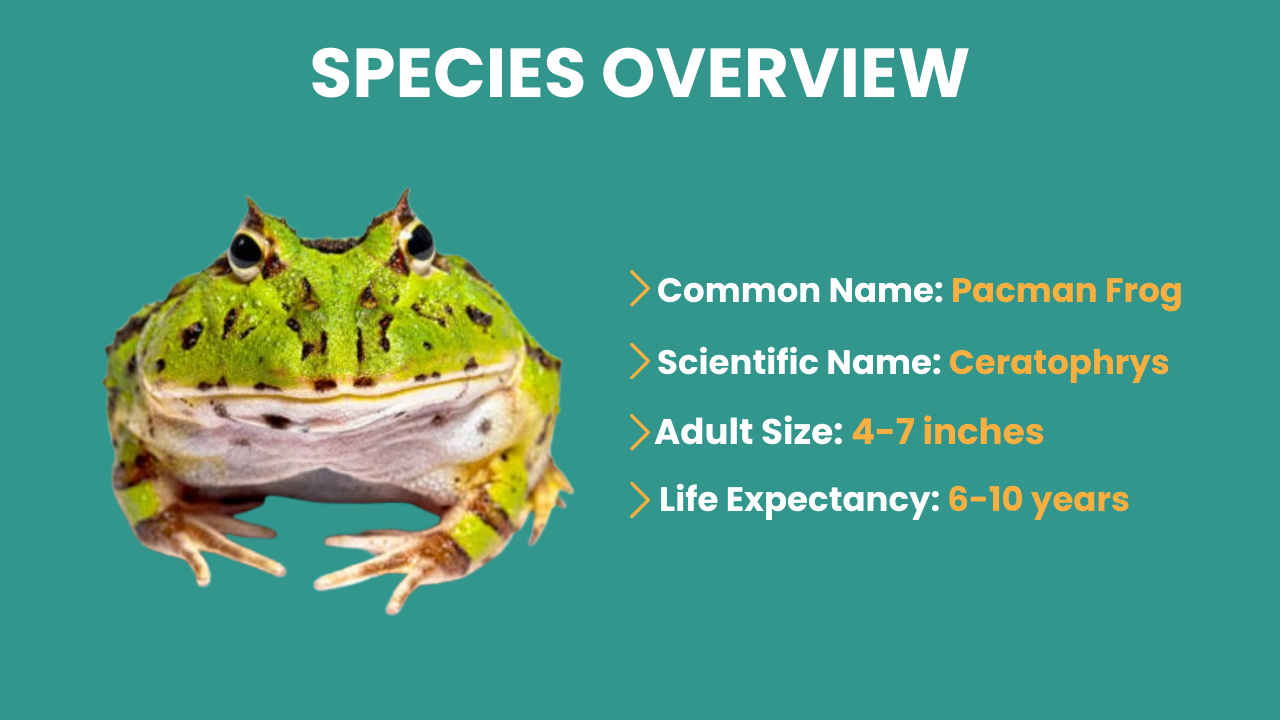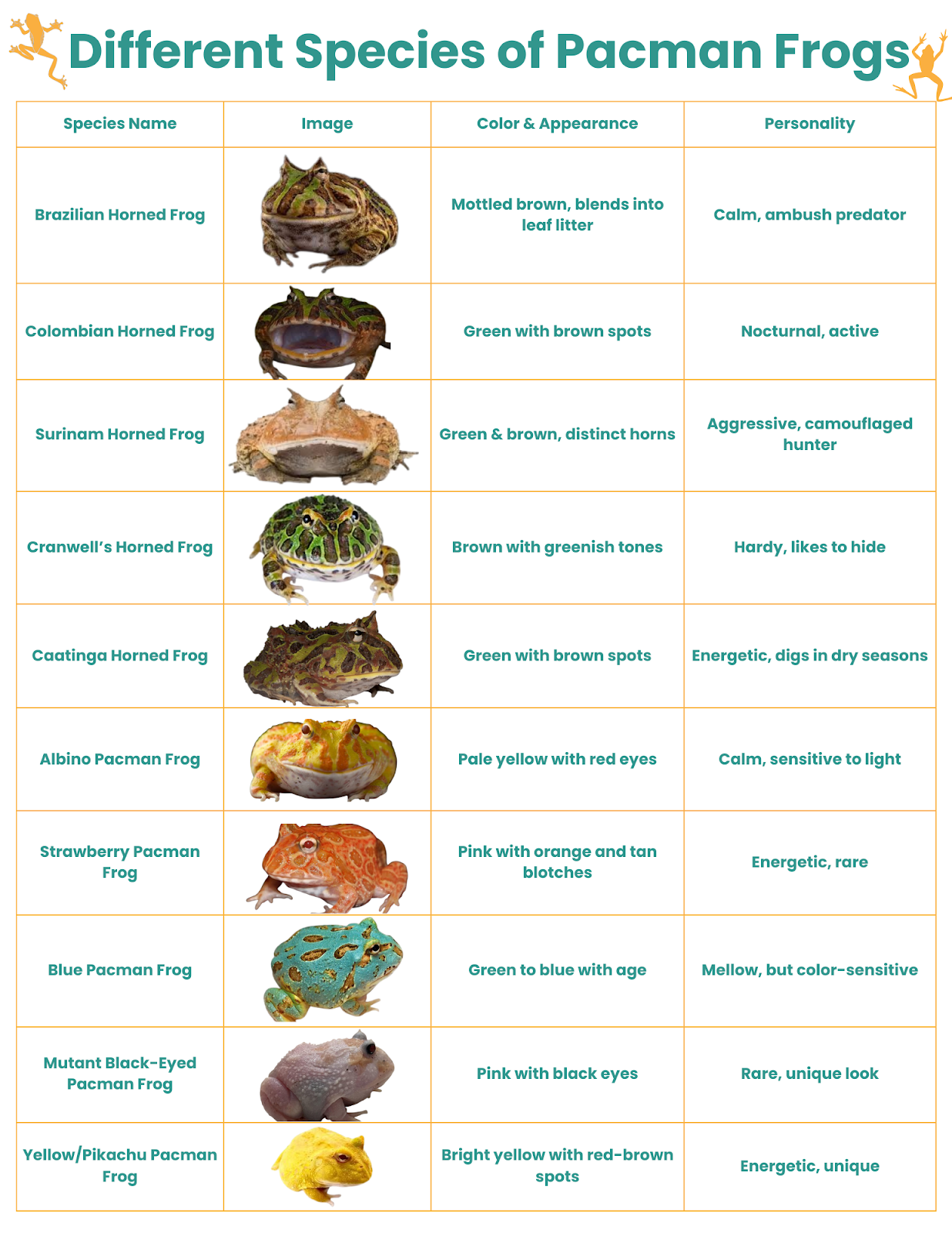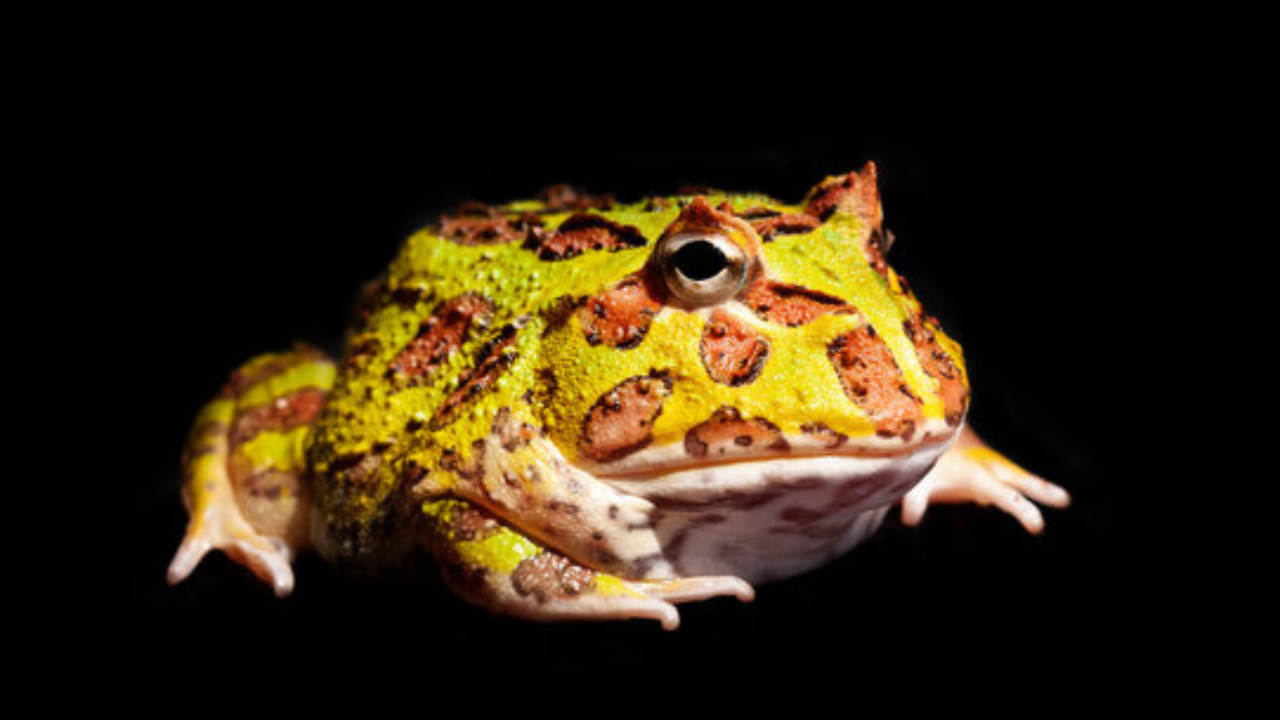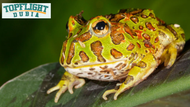Pacman Frog Care Guide as Pet by TopFlight Dubia Experts
Posted by TopFlight Dubia on Apr 4th 2024
Pacman frogs are easy to care for and are low-maintenance amphibians.
So, if you have a pacman frog or are wondering about buying a new one, you feel overwhelmed because of the following:
- How do you set up the perfect enclosure?
- What should you feed them?
- How do you keep them healthy?
All these can be tricky to figure out the do’s and don’t of Pacman frog care. These frogs are unique and low-maintenance but have specific needs that must be met.
- Wrong humidity levels? Your frog could struggle with shedding.
- Feeding it the wrong diet? It might develop health issues.
So, here is the beginner-friendly Pacman Frog Care Guide by TopFlight Dubia to help you provide the best care possible for your new pet.
Overview of Pacman Frog

Why Pacman Frogs Make Great Pets?
- Easy to care for.
- Have a unique appearance with large mouths.
- Ambush hunting behavior.
- Require a relatively small enclosure.
Different Types of Pacman Frogs

Habitat Setup for Pacman Frogs
These animals enjoy deep soil with limited ventilation.
Pacman Frog’s Enclosure Size
- Terrarium Size: 10-20 gallons. (20 gallons is ideal for adult pacman frogs).
- Lid: Use a screened lid for proper ventilation.
- Temperature: Keep it warm between 75–83°F during the day and 70–75°F at night.
Substrate
Coconut fiber: Best for burrowing and maintaining humidity.
Other Substrate options (with caution):
- Sterile Potting Soil: Ensure it is free of chemicals and fertilisers.
- Sphagnum Moss: Can be included in small amounts, but be mindful of potential ingestion issues.
Important Considerations
- Avoid Loose Substrates: The frog can ingest Tiny gravel or sand, resulting in digestive problems.
- Monitor for Mold: Coconut fiber can become moldy if too wet, so ensure proper ventilation and monitor the substrate regularly.
- Moisten the substrate, but never fully soak it.
- Provide hides made from terracotta pot pieces, half logs, PCV pipe, or other materials.
Temperature and Humidity
- Ambient temperature: 70–82°F
- Basking Area: 84–88°F
- Humidity: Keep between 60–80%.
- Heat Source: Keep an under-tank heating pad on one end of the cage, but use a thermostat to prevent the frog from burning.
Lighting
- Provide ambient lighting using soft, non-UVB bulbs for a 12-14 hour day/night cycle.
Food
- Gut-loaded insects and worms like crickets, Dubia roaches, and earthworms.
- Mealworms and waxworms are an occasional treat due to their high fat content.
|
Gut-Loading: This means feeding insects nutritious foods before offering them to your frog to ensure a balanced diet. |
Water
- Use filtered , dechlorinated water. Never use distilled or tap water.
- Change the water every one to two days.
- Mist the enclosure with chlorine-free water daily.
- Use a water conditioner to treat the water.
Decor and Hiding Spots
- Cut terracotta pots in half to create cave-like hiding spots.
- Cork bark can be stacked to create hiding nooks.
- Half logs to provide a covered space.
- PVC pipe can be used as a tunnel.
- Large leaf litter
- Rocks can be placed on the substrate to create small hiding areas.
Important Points To Consider
- Ensure the hiding spot is large enough for the frog to fit inside comfortably.
- Maintain a deep layer of substrate to allow for burrowing behavior.
- Place hides on both cool and warm sides of the tank.
- Regularly clean and replace any decaying plant matter or substrate.
What to Feed Your Pacman Frog?

Health and Common Issues
Metabolic Bone Disease (MBD)
Cause: Often caused by calcium deficiency or improper calcium + D3 supplementation.
Symptoms:
- Droopy lower jaw
- Muscle twitching or weakness
- Difficulty grabbing prey
- Bone deformities, such as curving of the spine or legs
Prevention and Treatment:
- Always dust prey with calcium and D3 supplements.
- Consult a veterinarian.
Toxic Out Syndrome
Cause: Pacman frogs absorb water through their skin, and toxins in water can lead to this disorder.
Symptoms:
- Cloudy eyes
- Lethargy and listlessness
- Hyperactivity
Prevention and Treatment:
- Change water frequently to avoid contaminants.
- Place the frog in shallow water in a separate container.
- Change the water twice until the frog improves.
Water Edema Syndrome
Cause: This disorder can be caused by kidney failure, damaged lymph heart or poor water quality leading to water retention.
Symptoms:
- Swelling of the body. Appearing bloated.
Soft, squishy texture upon touch.
Prevention and Treatment:
- Keep the water clean and ensure proper humidity.
- Consult a veterinarian to release the retained fluids if the condition persists.
Red Leg Disease
Cause:
- Stress from poor living conditions such as dirty water and improper temperatures.
- Overcrowding can also weaken the immune system.
Symptoms:
- Loss of appetite
- Cloudy eyes
- Redness on the belly or thighs
- Excessive skin shedding
Prevention and Treatment:
- Regularly change the water, clean the enclosure, and maintain the proper temperature and humidity.
- Always provide a stress-free environment for your frog.
Fungal Infections
Cause: Fungal infection occurs in scrapes or wounds in tadpoles. It is common in moist environments.
Symptoms:
- Fungal growth around a wound or injury.
- Discolored, soft patches on the skin
Prevention and Treatment:
- Rectify stressful conditions.
- Keep the enclosure clean to reduce the risk of injury and infection.
Impaction
Cause: Impaction occurs when the frog eats non digestible material like substrate. Small gravel is one of the culprits.
Symptoms:
- Hard, bloated abdomen.
- Difficulty in moving and digesting.
Prevention and Treatment:
- Avoid using small gravel. Use moist coir, moss, or foam instead.
- If impaction occurs, consult a vet for possible treatment.
Obesity
Cause: Overfeeding, especially with fatty foods, leads to excess fat storage rather than healthy muscle or bone growth.
Symptoms:
- Excessively round or bloated body.
- Lack of movement.
Prevention and Treatment:
- Follow a proper feeding schedule as per your frog’s needs.
- Avoid overfeeding with fatty insects like waxworms and mealworms, and instead feed dubia roaches and earthworms.
Blindness
Cause: A High-fat diet can lead to a buildup of lipids on the corneas, leading to blindness.
Symptoms:
- Cloudy or opaque eyes.
- Slow response to food or lack of movement.
Prevention and Treatment:
- Feed a low-fat diet.
- It can be prevented by proper diet and nutrition.
Endoparasites (Internal Parasites)
Cause: Improper temperature, humidity, or overcrowding.
Symptoms:
- Appetite loss.
- Lethargy.
- Skin sloughing.
Prevention and Treatment:
- Keep the optimal temperature, humidity, and substrate.
- Make sure the frog has a proper hiding place and space to reduce stress.
Signs Your Pacman Frog Needs Immediate Care
|
|
NOTE: If you ever notice any signs of unhealthy Pacman frogs, then seek a qualified veterinarian. |
Signs of a Healthy Pacman Frog
- Skin: Moist, supple, and free from lesions.
- Body: Round and plump, but not wider than it is long.
- Nostrils: Clear.
- Eyes: Clear and clean.
- Toes: Straight and smooth.
- Oral cavity: Pink and clean.
- Skin bumps: Regular bumps or “horns” that match the skin color.
Conclusion

Caring for a pacman frog may initially feel overwhelming, but with the right knowledge and guidance, it becomes an easy and rewarding experience. The guide covered everything you need to know, from setting up the perfect habitat and maintaining proper temperature and humidity levels to feeding the right diet. By following these essential care tips, you can ensure your frog thrives in a stress-free environment.

